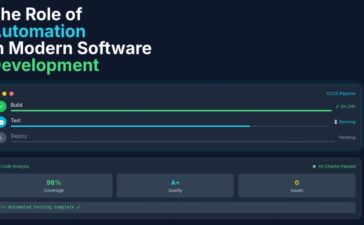In a world that is technologically advanced, business reports and travelling across borders have become quite the norm. Total transaction value in the Digital Payments market is projected to reach US$20.37tn in 2025. For traveling or trading apps, shopping or simple purchases, one always requires an immediate and proper currency exchange service.
A perfect tool to get rid of it is a powerful currency converter application that shows the current exchange rates, historical background, and even further forecasts. When it comes to international payment app development, it is vital to address the characteristics of the application, the development phases, and potential costs.
Essential Features of a Currency Converter App
To create a high-performing currency converter app, you must integrate a range of essential features that ensure accuracy, efficiency, and security.
#1. Real-time Exchange Rates
A currency converter app that should include current exchange rates obtained from financial organizations. This makes it possible for users of these conversions to be put through a conversion at any given point in time.
#2. Multi-currency Support
The currency conversion should be possible with a lot of world currencies, including those of primary and secondary importance. This should be easily achievable in meaning multiple currencies need to be converted at the same time so as to ease the process of transaction.
#3. Offline Mode
Providing the information about recent exchange rates and their availability, even when the user has no internet, makes it more convenient,t particularly for travellers.
#4. AI-powered Currency Prediction
The inclusion of AI currency prediction app enables users to have details to the near future of the currencies through market analysis and historical data. This is especially helpful to the people who are involved in international transactions such as those people who deal on the trading floor as well as the businesses people.
#5. Secure Transactions
If the application to be developed involves any aspects of payments, it is crucial to incorporate quality encryption technology for the protection of this similar information. The use of two-factor authentication and biometric logins is a good improvement since it increases the security of an account.
#6. Blockchain Integration
Using blockchain for currency conversion can enhance transparency and security in transactions. Blockchain technology minimizes exchange rate manipulation and ensures users receive fair conversions with minimal fees.
#7. Multi-language Support
Since the users are people from different countries, multiple languages make the app easily accessible and understandable.
#8. User-friendly Interface
A simple and intuitive design is critical. The currencies should be input easily so that users should not have a hard time getting around the app and they should be able to get results within a few steps.
#9. Historical Exchange Rate Data
Historical exchange rates mean that one can be in a position to understand certain trends as one plans to convert their money.
#10. Integration With Payment Gateways
For those users who wish to engage in direct transactions, the firm can incorporate secure payment methods that include PayPal, Stripe, or Apple Pay to make the conversion of currencies and payment to be easily accomplished.
Development Process of a Currency Converter App
Building a currency converter app involves several key stages, from planning to deployment.
#1. Market Research and Planning
First of all, pay attention to the target audience and analyze competitors. Find out the weaknesses of existing applications and what can be the differentiation factors for your application.
#2. Choosing the Right Technology Stack
The choice of the technology stack can only be made based on whether the application is being developed for iOS, Android, or both. Popular choices include:
- Frontend Development: React Native, Flutter, or Swift (iOS) and Kotlin (Android).
- Backend Development: Node.js, Python (Django/Flask), or Ruby on Rails.
- Database: Firebase, PostgreSQL, or MongoDB.
- APIs: Integrating financial APIs like Open Exchange Rates, CurrencyLayer, or Forex API for real-time data.
#3. UI/UX Design
When the interface is well designed then the users can be able to be able to navigate with ease. Wireframes and prototypes should be employed to demonstrate an app layout and to gather users’ feedback regarding it before the final implementation.
Backend Development and API Integration
To ensure a quick and safe processing of currency conversion data, user data, and payment transactions, it is necessary to create a secure and efficient back end. API integration helps to get exchange rate information in real-time and also make secure transactions.
#1. Testing
Testing the app’s functional, security, and performance needs to be conducted. Engage in unit testing, integration testing, and user acceptance testing to prevent the occurrence of bugs that may cause inconvenience to the clients.
#2. Deployment and Maintenance
After testing, deploy it on the App Store and Google Play Store on the mobile phones to be used for its testing. Maintenance performance necessitates steady update, security patching, and improvement on the offered features.
Cost of Developing a Currency Converter App
They considered issues such as features, type of platform, place of development, and level of integration needed to develop the program. Even if this is not an exhaustive list, the following is a general idea of what it might cost:
- Basic currency converter app ($10,000 – $25,000)
- Mid-level currency converter app ($25,000 – $50,000)
- Advanced currency converter app ($50,000 – $100,000)
- Ongoing maintenance and updates ($5,000 – $20,000 per year)
Outsourcing development to a skilled team can be a cost-effective option. While North America and Western Europe’s developers have higher hourly rates ranging from $50 to $150, Eastern Europe and Asian developers have lower, competitive rates of $20 to $50 for each hour.
Final Thoughts
Developing a currency converter application involves pre-design, technical architecture, and unique development qualities necessary to make it popular among users. Smart features, such as adding an AI currency prediction application can provide an advantage to the users and the use of blockchain in carrying out currency conversion can ensure more security and transparency.
When entering the sphere of international payment applications or making just a converter for using abroad, the features and approaches to development are vital. People all around the world use currency convertor app services and if planned with proper investment your app can be one of them.





